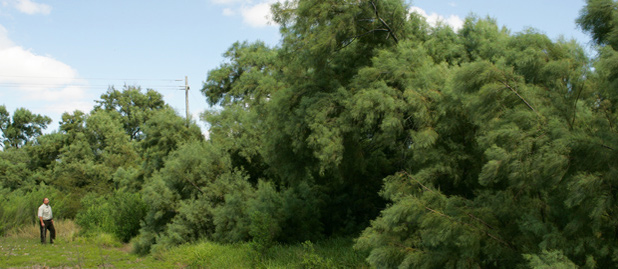What You Can Do to Help Stop Invasive Plants

Salt Cedar or Tamarisk at Laguna Atascosa NWR by Steve Hildebrand FWS, Feb 2009
The following are a few simple steps that you can take to help minimize the threat to wild birds and their habitats posed by introduced, invasive plants:
- Know your own backyard. Learn to identify
your region's most threatening pests. Find out who to contact
to report new invasions or to get tips on controlling pests
on your property.
- Landscape with native species or non-invasive plants.
- Don't release pets or aquarium plants
and fish into the environment.
- Avoid disturbing natural areas' it increases
their vulnerability to alien species invasions.
- Do not send or receive potentially harmful plants or animals through the mail.
- Don’t bring plants, fruits, soil or animals into the country from abroad–or to HI from the mainland–without having them inspected by quarantine officials.
- Clean boats and boating equipment before transporting them from one water-body to another. Leave behind un-used bait and bucket water.
- Clean your boots and camping gear before setting out for other regions or countries, and again before returning home.
- Spread the word – educate yourself and others about alien species.
- Get involved – join local volunteer efforts to remove invasive species in natural areas.
- Visit local, regional, and national land managers (such as state parks or National Wildlife Refuges) and ask them how you or your organization can provide assistance in the war on weeds. Many land managers need volunteers to help locate and eradicate small infestations before they grow out-of-control.
- Start your own education and
outreach program to reach others in your community by working
with community groups, schools, libraries and nature centers.
Organize volunteer events, community campaigns or interpretive
programs. Write articles for your local and national newsletters.
|
